


Back in the 1960s there were many large airlines in the United States; TWA, Eastern, Braniff, Northwest Orient and Western to name just a few. But the one that stood out on the international air routes was Pan American World Airlines or as it was better known Pan Am.
Sadly, after failures and takeovers, only three major legacy airlines are left in the USA; American, Delta and United. This is the story of the unofficial US flag carrier that was once the best-known international airline in the world, Pan American.

The birth of Pan Am in 1927 was not a straightforward affair. In March 1927 holding company Pan American Airlines Inc. (PAA) was set up by a number of U.S. Majors including Henry ‘Hap’ Arnold and Carl Spaatz both of whom would go on to earn fame for their part in the USAAF 8th Air Force bombing campaign over Germany during the Second World War. The reason behind the formation of PAA was to counter a threat by the German-owned Columbian airline SCADTA to set up routes into the US by obtaining the rights to fly mail between Key West and Havana. PAA obtained these mail rights from the US Government but didn’t have any planes with which to fly the route or landing rights in Cuba.
Enter stage right Juan Tripp who had also set up an airline called Aviation Corporation of the Americas (ACA) with plans to connect Florida with the Caribbean and South America. ACA had previously taken over American International Airways who did have rights to fly to Cuba. Thus it was actually ACA who operated the first PAA mail flight to Cuba in October 1927 using a borrowed aeroplane as ACA also didn’t have a suitable plane for the trip. In the following year ACA and PAA merged and Juan Tripp became the operational head of Pan American Airways the operating arm of ACA. With the mail route to Havana, Pan Am became the first US airline to operate a regular international air service.

The US Government were very happy that Pan Am and its operation of the mail contract had seen off the threat of SCADTA. In future dealings with the airline Pan Am was often granted exclusive rights on international routes which enabled them to quickly expand their operations. The airline’s plan was to expand into Central and South America and it proceeded to take over a number of airlines operating in these countries and to negotiate mail rights with various governments to whose country the airline wished to fly. A deal was also done with the Grace shipping company to get a toehold into countries they had dealings with and a subsidiary airline was set up with Grace called Panagra. In 1931 ACA changed its name to Pan American Airways Corporation. Pan Am started flying its routes to South America using Consolidated and Sikorsky flying boats and by 1931 the Sikorsky S40 had begun services carrying the first of the Clipper names with which all later Pan Am aircraft would be named. These flying boat flights left from the International Pan American airport at Dinner Key near Miami.

Tripp had been looking westwards with plans to run a route from San Francisco via Honolulu to Hong Kong and on to Auckland New Zealand. He also negotiated landing rights at Manila in the Philippines. On 22 November 1935 a Martin M-130 made the first commercial crossing of the Pacific carrying mail and freight from San Francisco to Manila. Despite flying the trip in five legs the flight time cut two weeks off the fastest steamship journey between the two cities. The first passenger flights on the route started in 1936. In 1937 as larger flying boats joined the airline Pan Am began to fly proving flights to Europe with proposed routes to the UK and France via Bermuda and the Azores.
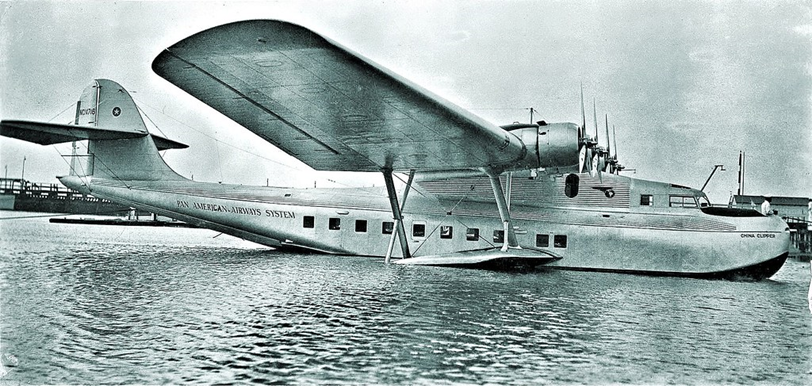
It wasn’t until 1939 and the delivery of the final flying boat to enter Pan Am service, the Boeing 314 Clipper, that services across the Atlantic began. Flying initially from Baltimore to Lisbon this was the first commercial passenger service across the Atlantic. Using the Boeing Clippers, France and the UK were soon linked to New York via Marseilles and Southampton. The big Boeings also saw service on the Pacific routes including flights to Singapore and China. During the Second World War Pan Am and their Clippers flew regular services across the Atlantic in support of the war effort alongside those of BOAC. In January 1942 ‘Pacific Clipper’ flew the first circumnavigation of the world by a commercial airliner - another Pan Am first. The name Clipper harked back to the golden age of the sailing ships and the Pan Am crews now wore smart naval type uniforms with the pilots having white tops to their caps
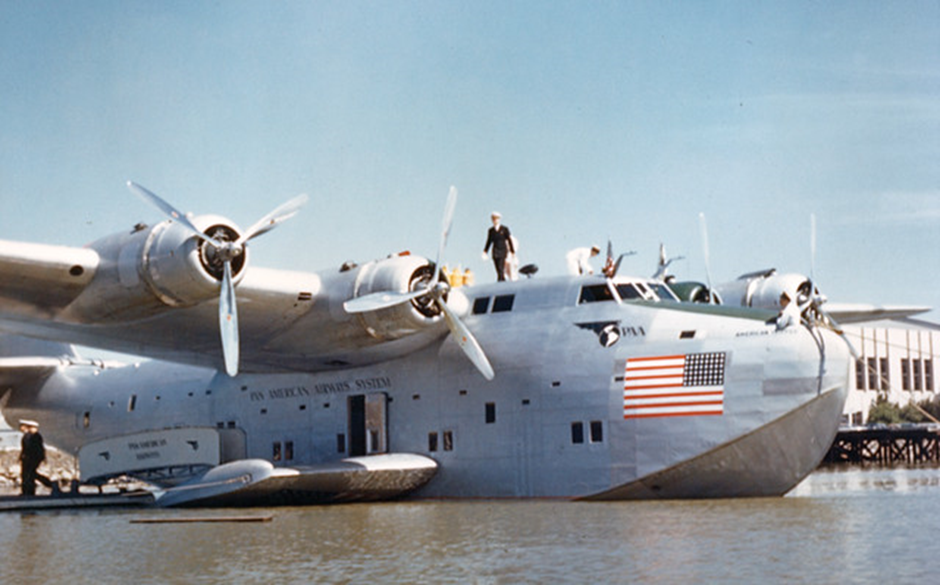
In 1940 Pan Am had introduced the land-based Boeing 307 Stratoliner which featured new innovations such as the first land-based airliner to have a flight engineer and also the first to have pressurisation. The Stratoliner was based on Boeing’s iconic heavy bomber the B-17 and as with the British Lancaster and civilian York, used the wings, rudders and engines of the bomber. Stratoliner service with Pan Am and indeed TWA was short as come 1942 when the USA entered the Second World War the aeroplanes were immediately taken over by the US military.
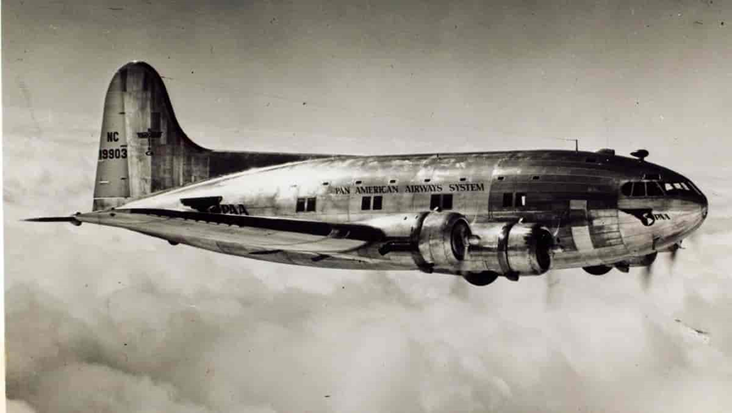
By the end of the war it was apparent that air travel would become big business and the US government could no longer give its patronage to Pan Am but needed to adopt a more level playing field. This saw many competitors begin to challenge Pan Am over its routes, such as TWA on the transatlantic routes, Braniff on the flights to South America and Northwest Orient on those to Asia. The first major competition however came from American Overseas Airlines (AOA) who on 24 October 1945 operated the first-ever land-based scheduled flight from New York to London. This flight staged via Boston, Gander, Shannon and thence to London using a Douglas DC-4. In January the following year Pan Am commenced its own DC-4 flights across the Atlantic to London and Lisbon. Shortly after, all transatlantic flying boat flights ceased as the land-based plane could cover the flight to Lisbon nine hours quicker than the Boeing Clipper flying boat.
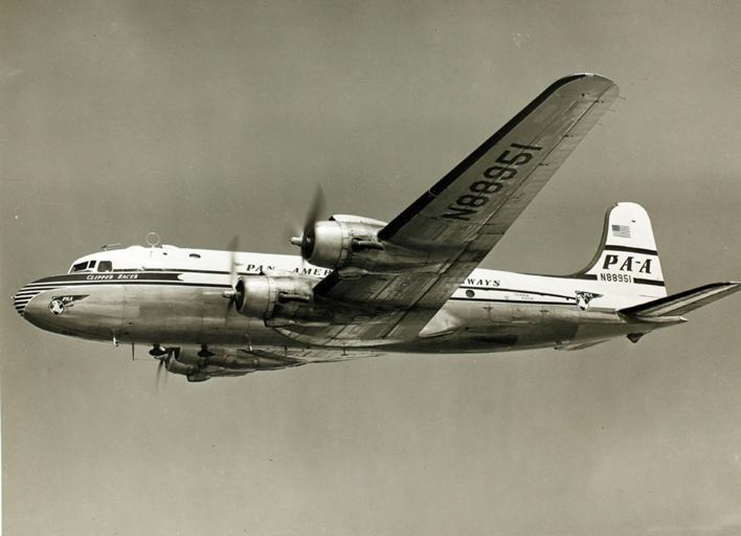
Trans World Airlines, (TWA) owner Howard Hughes had announced his intention to start transatlantic flights using the new pressurised and fast Lockheed Constellation. To counter this threat Pan Am also ordered the big Lockheed and beat the TWA Constellations onto the route by just three weeks. Like many airlines at the end of the war Pan Am was operating DC-3s on some of its services such as the Miami- Buenos Aires route which took 71 hours 15 minutes. By the following summer DC-4s were flying the route not from Miami but from New York and took just 38 hours 30 minutes. When the larger and faster Douglas DC-7s arrived in 1958 this was cut to 25 hours 20 minutes. By 1946 Pan Am was only flying as far west as Hawaii but with the advent of the DC-4, flights to Asia soon recommenced. Indeed the following summer a DC-4 operated half of the first round the world scheduled flight by flying from San Francisco out to Hawaii, Midway, Wake, Guam, Manila, Bangkok and finally Calcutta where it met the eastbound Constellation that had departed from New York. The two planes then turned around and retraced their steps back to the USA, these flights were the famous flight numbers PA001 and PA002. On these round-the-world flights there had always been the requirement to change planes until 1960 when the Boeing 707 took over and flew the entire route as one flight number, PA001 one way and PA002 the other. By 1962/3 these round-the- world flights had become a daily service but it wasn’t until 1975/6 that the Boeing 747s on the route finally made it a truly round-the-world flight by starting and ending flights in New York.
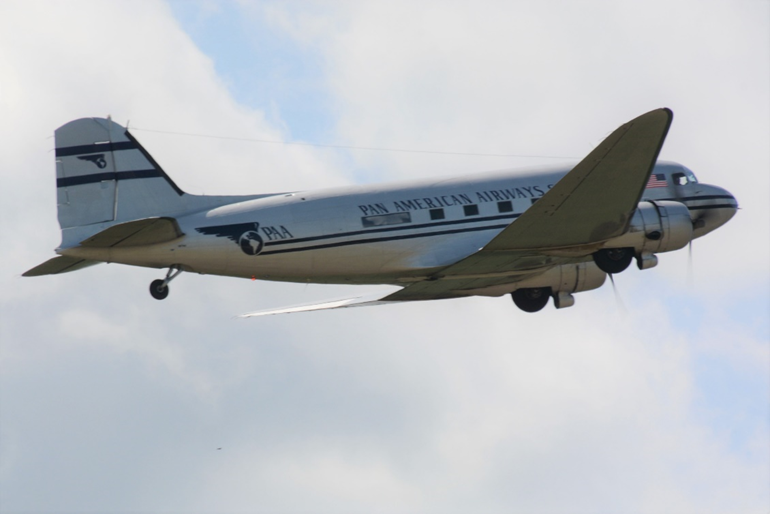
By April 1949 launch customer Pan Am finally got its new Boeing 377 Stratocruisers and put the super luxury double decker aeroplane on the Pacific route to Hawaii. By the end of the year the Pan Am ‘Strats’ could be seen competing across the Atlantic with those of AOA and BOAC. The big Boeings were very costly to run and only had around a ten-year life with the airlines as by the late 1950s jets were beginning to appear and Pan Am retired their last ‘Strat’ in 1961.
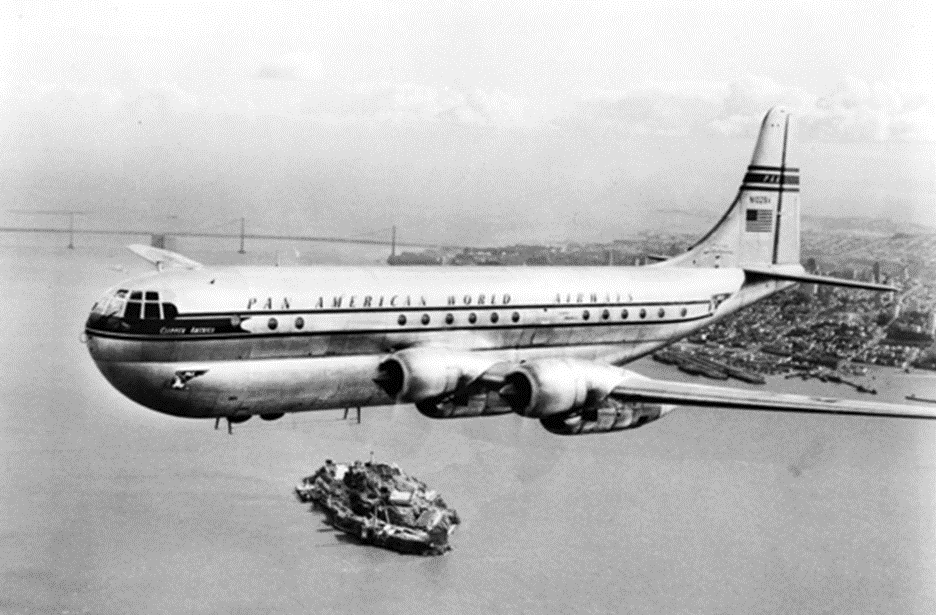
In January 1950 the Pan American Airways Corporation officially changed its name to that which had been unofficially used for many years, Pan American World Airways Inc. In September of that year it took over rival American Overseas Airways and also ordered a large fleet of 45 Douglas DC-6s the larger pressurised brother of the DC-4. In 1952 DC-6 Clipper Liberty Bell flew the first all-tourist configuration flight from New York to London. This complemented the all first-class configuration of the Stratocuisers also on the route. The DC-6s started to replace the DC-4s Pan Am was using on its Internal German Services (IGS) routes. These routes were part of the agreement with the USSR to allow US, UK and French airlines to fly into West Berlin which was surrounded by Soviet East Germany. Pan Am was the airline to operate the flights on behalf of the USA. The reign of the DC-6 on the Atlantic route was short-lived, as by 1956 Pan Am had introduced the ultimate Douglas piston airliner the DC-7C on the route to compete with TWA and its Super Constellations and Starliners. The DC-7C could fly New York-London non-stop in 10 hours 45 mins. The DC-7s speed advantage was beaten in December 1957 by the introduction of the turboprop Britannias flown by BOAC. Little did they know the even faster Comet was less than a year away!
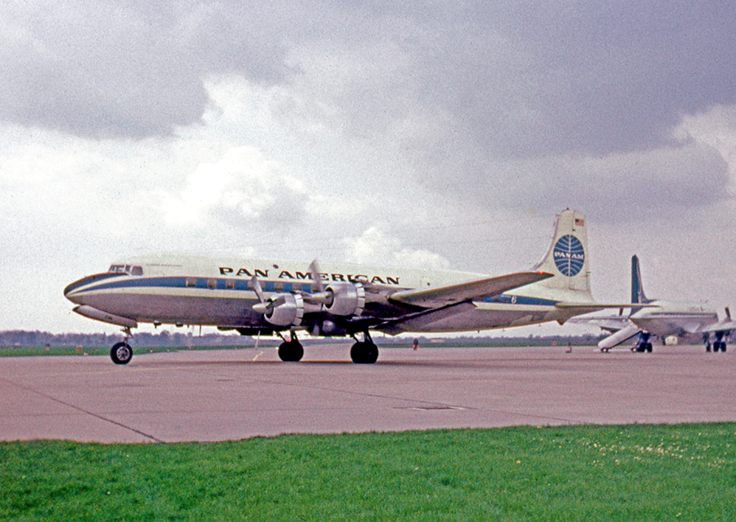
By August 1958 there were 65 Pan Am flights a week flying east from New York Idlewild airport. With BOAC already flying their Comet Jetliner to Africa and onwards to Australia, Pan Am were keen to get into jets. They were to be the launch customer of the Boeing 707 having ordered 20 in 1955, but the original plans for the aircraft only saw it wide enough for five seats whereas the rival Douglas DC-8 could seat six abreast. In an effort to convince Boeing to widen their design Pan Am also placed an order for 25 of the Douglas aircraft. The cost of the combined orders was $269 million, at the time the largest aircraft order ever. The ruse worked and Boeing redesigned their 707 for six abreast seating and a 707 was used on Pan Am’s first-ever jet flight service, New York to Paris via Gander on 26 October 1958. However three weeks earlier BOAC had already flown non- stop across the Atlantic from New York to London with their Comet 4. (Eds note The imaurgaral jet flight was in our comet G-APDB!)
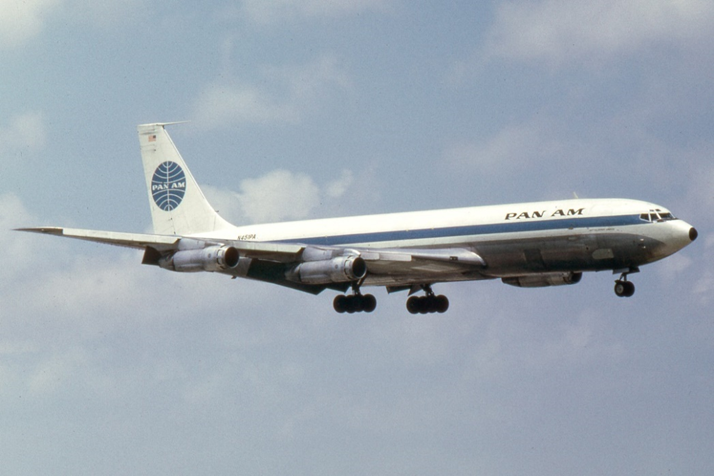
Soon the modern, smart and downright sexy Boeing jets could be seen all around the Pan Am route network and adding to this feeling of modernity Pan Am constructed its Worldport building at New York airport in 1960. With just a nod to the old German terminal at Templehof, the huge roof enabled the aircraft to nose under cover against the terminal building. As jets got bigger the terminal had to have new pier extensions to enable aircraft such as the Boeing 747 to use the terminal. Delta Airlines took over the building in 1991 and they continued to use it until 2013 when it was finally demolished.
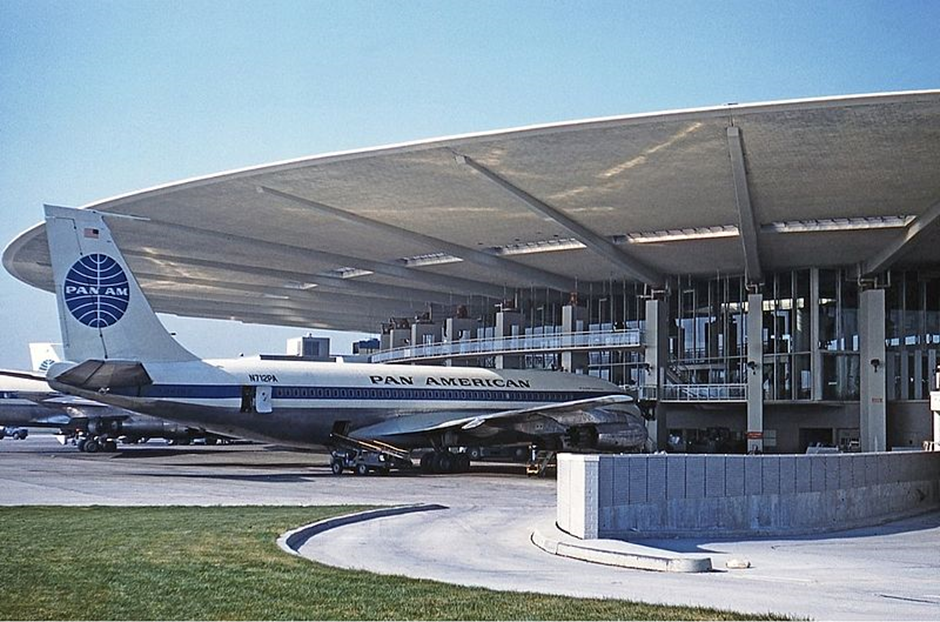
In 1966 Pan Am had placed an order with Boeing for the ground breaking 747 Jumbo jet. Again Pan Am was to be the launch customer and had ordered 25 of the giant new planes. The first one was delivered in January 1970 and after a few days showing off their new plane around the US the first flight from JFK to London was due to depart on 21 January. The flight was delayed due to engine problems (something that would blight the early 747s for some time) and another 747 was substituted. So the Clipper Victor made the first ever commercial Boeing 747 flight. The year Pan Am ordered the 747, 1966, was also the year the DC-6s left the Internal German routes and were replaced with a fleet of Boeing 727s. So busy were these flights that for many years more passengers boarded a Pan Am aircraft at Berlin than any other airport on the Pan Am network! The Boeing 727s would over time be replaced with the smaller Boeing 737 on the IGS routes and would in turn hand over to wide-body Airbus A310 aircraft in 1985.
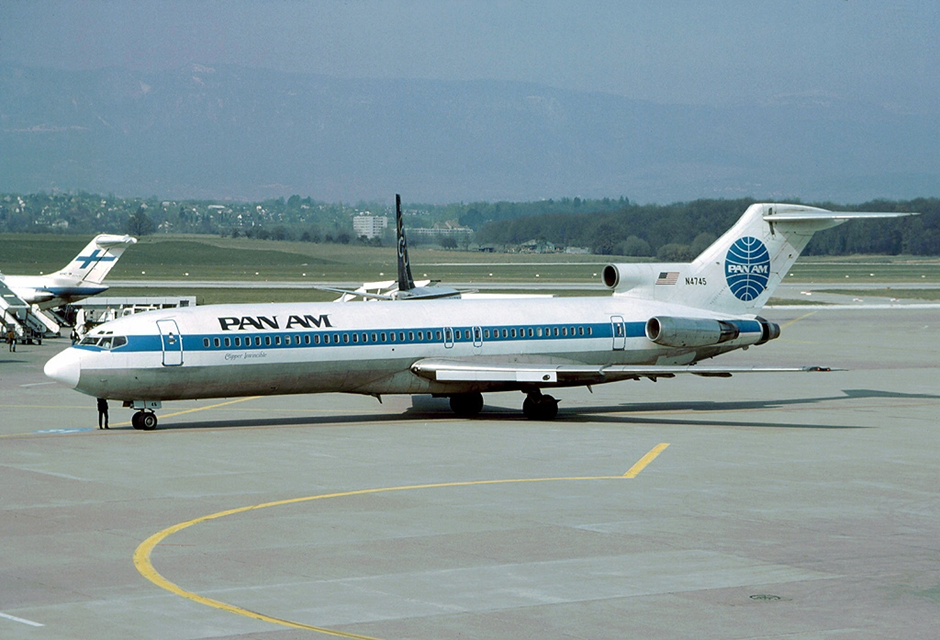
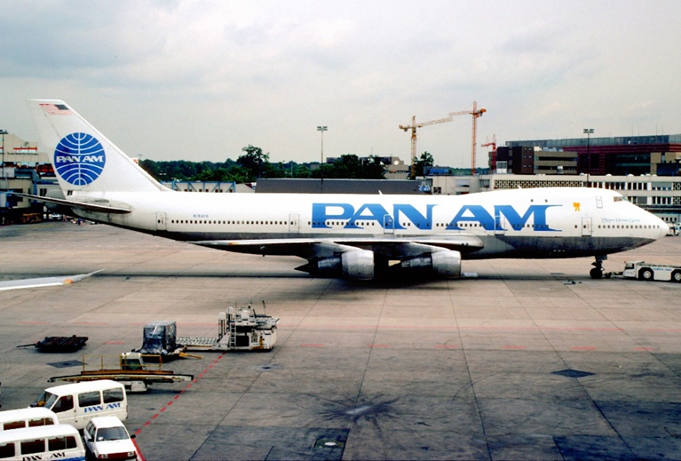
Two years after deregulation in 1978, Pan Am was finally granted permission to take over a domestic airline. The airline of choice was National Airlines - an airline with a completely different (apart from Boeing 727) fleet to Pan Am, different pay scales and a route network that was mainly North-South - not ideal for tying up with Pan Am’s international flights. Add to this a poorly managed process and you can see the national takeover was not a great success. Come 1980 and the airline was once again in financial trouble. Non- core assets such as the Pan Am building in downtown New York were sold along with the Intercontinental hotel chain and the airline’s stake in the Falcon jet centre. In October 1982 the round-the-world route was stopped with the airline no longer flying the sector between Delhi and Hong Kong. Despite these problems in 1984 the airline placed an order with Airbus for a number of new A300, A310 and A320 fuel-efficient airliners

Things had not picked up financially, so in 1985 the airline sold off its entire Pacific division to United Airlines. This sale included the Pan Am Boeing 747SPs, remaining Lockheed Tristars and the DC-10s inherited from National. This fire sale raised $750 million. With just New York and Miami as its mainline hubs, the airline had set up Pan Am Express with small commuter airlines to act as a feeder service for the international flights. In 1986 The Pan Am Shuttle was started linking Washington-Boston – New York in direct competition to the Eastern Airlines Shuttle which had been running over the same route for many years. In 1988 a programme of updating the interiors of the aircraft and a push for better punctuality took place. This was very successful indeed and the third quarter of 1988 was Pan Am’s most profitable ever.
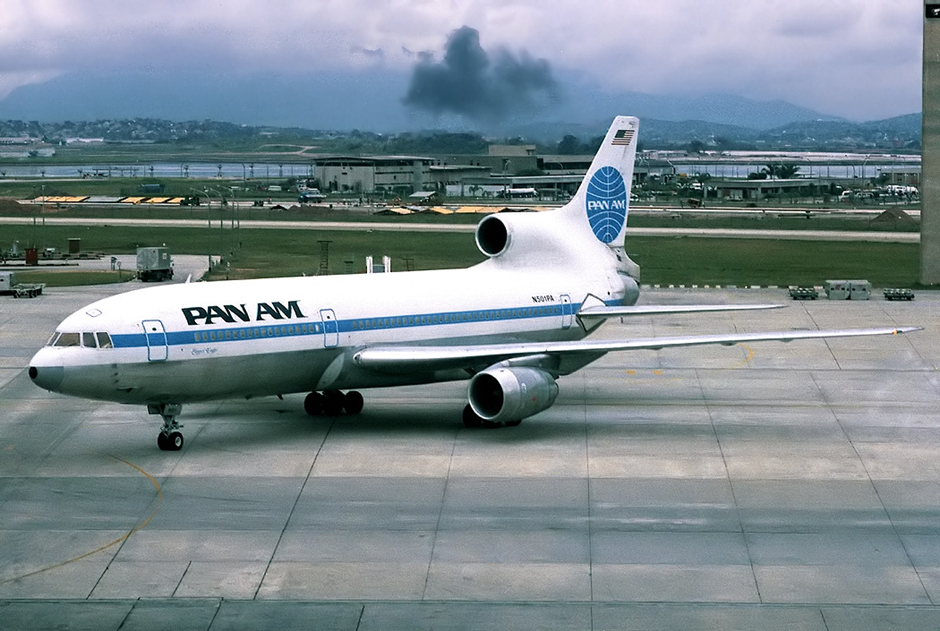
The downing of PA103 over Lockerbie in 1988 by a terrorist bomb adversely affected aviation in general and Pan Am in particular. Not only was Pan Am’s reputation undermined but also a huge $300 million law suit was taken out against the company by the relatives of those who died. In 1989 in one final gasp to create an effective domestic network and regain a foothold across the Pacific, the airline made a takeover offer to Northwest Orient. All was going well until the deal was snatched away by a greater offer on behalf of Delta Airlines and Pan Am lost the last chance to create a domestic network. Matters went from bad to worse as the following year saw the First Gulf War and a massive fall-off in air travel particularly across the Atlantic which was one of Pan Am’s prime routes. To counter these losses the airline took the drastic step of selling off the Heathrow slots to United which left Pan Am serving the UK (at Gatwick) with just two routes Detroit and Miami. It also sold off the IGS services to Lufthansa and made 2500 members of staff redundant.

This time drastic measures could not save the airline and Pan American World Airways filed for bankruptcy protection in January 1991. Delta Airlines purchased all the profitable parts of Pan Am including 45 jets. It also injected a large amount of money into a new smaller Pan Am that proposed to start services from Miami down to Central and South America, just like Pan American Airlines had back in 1927. Services started but the new revamped airline was still losing massive sums and on 4 December 1991 Delta pulled out its funding and Pan Am closed its doors for good.
So another once proud airline which had led the way in so many things was consigned to history. In its heyday of the 1960s-early1970s the Pan Am brand was recognised and respected around the world by the blue globe on the fins of its aircraft , the pilots with their white hats and the flight attendants in their smart blue uniforms. If you worked at Pan Am in those times you were looked upon as somebody a bit special, just as the airline was. In 1968 the company’s 150 jets flew to 86 different countries covering all continents other than Antarctica. At that time the airline was very profitable with reserves of $1 billion. Juan Tripp was CEO of the airline from 1927 to 1968 when he stepped down, although he still attended the board meetings. Thankfully, he passed away in 1981 before his pride and joy met its ignominious end.

‘till the next time Keith
Registered Charity No. 285809